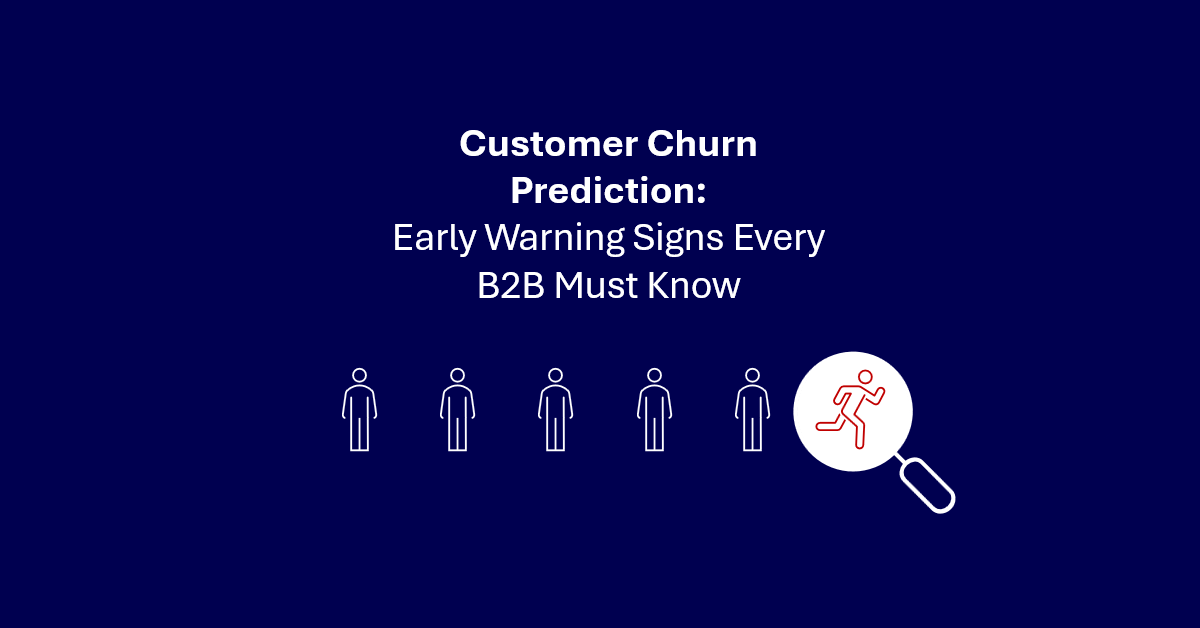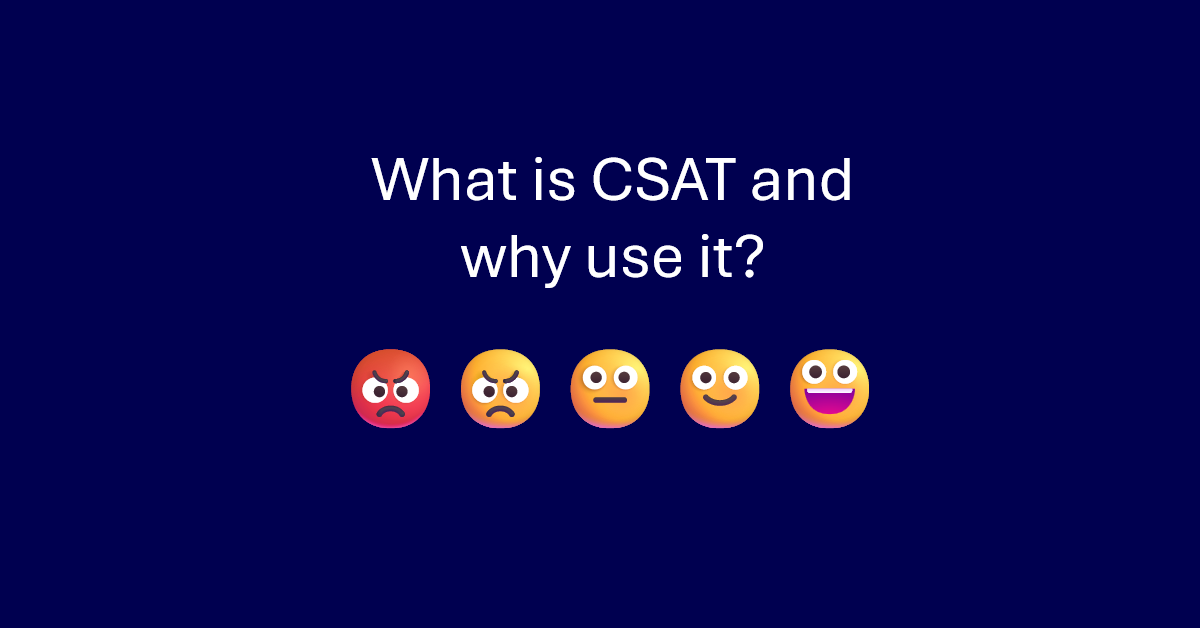
What is Customer Effort Score and why use it?
Customer experience has moved beyond a soft concept. It’s now a measurable, strategic differentiator for B2B businesses. While metrics like Net Promoter Score (NPS®) and Customer Satisfaction (CSAT) are widely used, one less known but increasingly important measure is the Customer Effort Score (CES).
CES focuses on a simple but revealing question: How easy do you make things for your customers?
This post explores what CES is, how it works, and where it fits into a wider customer insight approach. It also considers how organisations can use CES not just to track performance, but to inform practical improvements to customer journeys, especially when paired with support from internal CX teams or external insight partners.
What Is Customer Effort Score?
Customer Effort Score is a metric designed to measure how much effort a customer has to put in to get an issue resolved, make a purchase, or access support.
It’s typically gathered using a short survey question after a specific interaction, posed as either a question or a statement. Examples are:
"To what extent do you agree with the following statement: [Company] made it easy for me to handle my issue."
or
"How easy was it to complete your transaction?"
Customers respond using a 3, 5 or 7-point Likert scale, ranging from Strongly Disagree (high effort) to Strongly Agree (low effort).
What CES Measures:
- Friction in support or service processes
- Clarity of digital journeys or documentation
- Responsiveness and resolution efficiency
- Ease of doing business — a key driver of long-term loyalty
While NPS asks whether a customer would recommend you, and CSAT asks whether they liked the interaction, CES asks whether the experience was hard work. That distinction matters.
Why Customer Effort Matters
In a landmark 2010 study, the Corporate Executive Board (now part of Gartner) found that reducing customer effort was a better predictor of loyalty than delighting customers. Their research showed:
- 96% of customers who had a high-effort service experience became more disloyal.
- Only 9% of customers with a low-effort experience showed signs of disloyalty.
- Effort was 40% more accurate at predicting loyalty than customer satisfaction.
In short: customers remember how easy (or difficult) it was to get help more than they remember a moment of delight.
For B2B businesses, where processes can be more complex, journeys more fragmented, and relationships more interdependent, effort becomes an especially relevant signal.
When to Use CES
CES is typically used post-interaction, rather than as a general satisfaction measure.
Common Use Cases:
- After a support ticket or live chat is closed
- Following product onboarding or implementation
- After account management or billing-related enquiries
- Following use of digital self-service tools (e.g. knowledge base, customer portal)
The key is context. CES is at its most useful when linked to a specific journey step, allowing you to isolate and address friction points in real terms, whether that's in digital user experience, service processes, or frontline delivery.
Calculating CES
For this example, we will use a simple 5-point Likert scale.

1) Average Score Method
Collect CES responses on a 1–5 scale:
- Total score = 360
- Number of responses = 100
- Average CES = 360 / 100 = 3.6
In terms of the snapshot, this shows a middle of the scale result, meaning the respondents consider it medium effort. This would be worth investigating further, perhaps via Voice of the Customer interviews to go deeper into the situation. However, the results should be compared with and prioritised versus results from other areas.
When measured on an ongoing basis, a rising average indicates improvement, i.e. customers are reporting less effort. A drop may signal that changes are causing confusion or adding complexity. Hence, CES is a score that benefits from regular monitoring.
2) High-Effort Percentage
You can also monitor the percentage of respondents selecting 1–2 (highest effort). This approach highlights friction quickly and helps prioritise follow-up with specific customers or teams.
There’s no universal ‘good’ CES score, and benchmarks vary by industry and channel. Consistency and direction of travel matter more than an absolute number.
CES vs NPS vs CSAT
Each metric measures something different. CES focuses specifically on operational friction, rather than satisfaction or brand perception.
|
Metric |
What it Measures |
Best For |
Example Question |
|
CES |
Ease of interaction |
Reducing friction |
"How easy was the transaction?" |
|
NPS |
Brand loyalty |
Long-term relationship health |
"How likely are you to recommend us?" |
|
CSAT |
Event-specific satisfaction |
Snapshot feedback |
"How satisfied were you with our service?" |
In practice, many organisations benefit from using all three in combination, supported by qualitative follow-up or wider insight programmes.
Tools and Approaches for Measuring CES
You can collect CES using a wide range of tools, from lightweight survey platforms to integrated customer experience systems.
Common Options:
- Survey Tools: SurveyHero, Typeform, Google Forms
- Customer Support Platforms: Zendesk, Intercom, Freshdesk
- CRM Systems: HubSpot, Salesforce (with feedback modules)
- Product Tools: Hotjar or FullStory (to connect behaviour and feedback)
- External partners: like Kinvale
While it’s possible to run CES in isolation, it often delivers more value as part of a structured insight or Voice of the Customer (VoC) programme, particularly where trends need to be linked to operational or strategic decisions.
This is where external support can add value. An experienced partner can help contextualise CES within your existing customer data, advise on sample design and timing, and ensure that any feedback collected is translated into meaningful action, whether operational, digital, or cultural.
How to Act on CES Insights
Collecting a score is only the beginning. The true value of CES comes from what you do next. The goal should be to systematically collect feedback, use this to identify effort within process and redesign them to remove as much friction as possible. After all, the harder it is for a customer to do something, the greater the chance they will take their business elsewhere.
- Identify Friction Points
Low CES scores can point to specific issues, like being passed between departments, unclear documentation, long response times, or confusing digital journeys.
Start by mapping scores to the relevant journey step, team or system.
- Combine Quantitative and Qualitative information
Pair CES with verbatim comments or follow-up calls to understand why effort was high. A number alone can only tell you so much.
This is particularly helpful in B2B, where effort may result from internal complexity rather than poor service delivery.
- Prioritise High-Impact Fixes
Starting to monitor CES can reveal many issues, some of which may be minor. Prioritisation is the key. Focus first on high-volume or high-impact journeys. For example, if onboarding has a low CES and high churn, that’s an immediate priority.
Improvements might involve updating documentation, rethinking escalation processes, or redesigning workflows, all of which is achievable with cross-functional input.
- Close the Loop
Where CES is low, following up with the customer directly can help recover trust. It also shows that you're listening and turning feedback into a tangible experience.
Building this kind of feedback loop into your business processes will bring immediate positives, as customers will know they are being listened to and will see improvements. It generally makes employees happier too as they will start to receive less complaints.
Real-World CES Examples
Some large organisations have openly shared the impact of effort reduction:
- American Express found that customers whose problems were resolved in a single interaction were significantly more loyal than those whose issues took more than one contact, leading them to invest in first-call resolution as a priority.
- Gartner’s research (cited earlier) showed that companies focusing on reducing customer effort could increase customer loyalty and reduce service costs by up to 37%.
In most B2B contexts, CES benchmarks are rarely published, but internal improvements often emerge through careful tracking over time. Rather than comparing against industry peers, the aim is usually continuous improvement and journey optimisation.
Feedback -> Action -> Friction reduction -> Improved service -> Higher retention
Common Pitfalls to Avoid
Even with good intentions, CES can be misused or misunderstood. Here are some common mistakes:
❌ Using it as a standalone success measure
CES is diagnostic. A rising score doesn’t always mean better customer experience if it isn’t linked to outcomes like retention, revenue, or trust. It should never be a vanity metric, CES is about making things better for customers.
❌ Asking the question in the wrong context
CES works best when tied to a clear action (e.g. resolving a problem, completing a form). Avoid asking it at random points in the journey or where the feedback can’t be acted upon.
❌ Collecting data without follow-up
If you’re not prepared to act on low scores, customers will notice. CES works best as part of a feedback culture, not a compliance exercise. If you aren’t going to act on the feedback, there is no value in collecting it; it might even have a more negative effect as customers will get frustrated they are feeding back but not being listened to.
Where CES Fits in a Broader Insight Programme
Customer Effort Score is useful in its own right, but it’s most powerful when used in combination with other feedback methods.
In practice, CES often serves as a valuable early indicator within wider frameworks like:
- Voice of the Customer programmes
- Customer journey mapping and service design
- Churn analysis or renewal forecasting
- Onboarding or implementation reviews
The goal should be to align these insight streams, translating survey data into meaningful change across systems, teams and culture. Metrics like CES should become part of operational improvement, not just reporting.
Final Thoughts
Customer Effort Score offers a practical, proven way to understand where customer experiences are harder than they should be. In B2B settings, where complexity is often assumed to be normal, CES can be especially valuable in identifying opportunities for simplification.
Used well, it can:
- Help reduce churn and complaint volume
- Support journey and process redesign, reducing friction for customers
- Provide a clear metric for internal teams to improve against
- Serve as a lead indicator of customer satisfaction and loyalty
But as with any metric, its value lies in what you do with it. Whether you’re using CES as a standalone signal or part of a wider insight programme, what matters most is that it leads to better conversations, better journeys, and better outcomes.
About Kinvale
At Kinvale, we help growing businesses understand the voice of their customers and their people. We use tools like CES and bespoke insights programs to help you turn sentiment into strategy, without the complexity or cost of enterprise-scale platforms. Ready to make better decisions, grounded in real feedback?
👉 Contact us for a free consultation.


